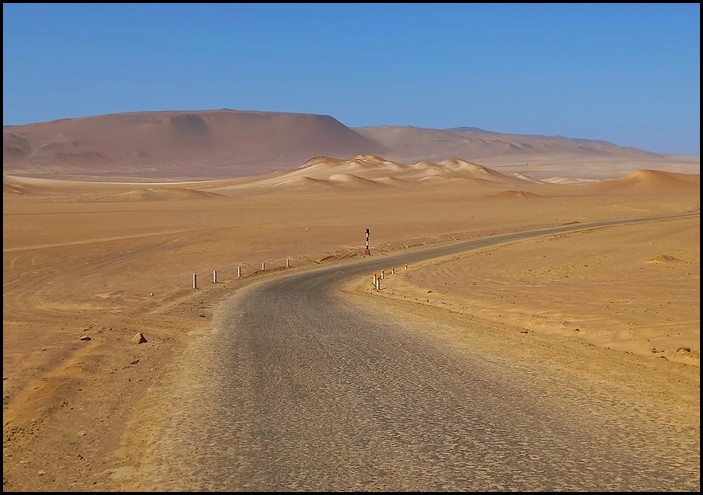
All about Paracas National Reserve – Peru
Introduction
Paracas Peninsula is considered one of the most beautiful coastal areas in Peru. It’s a place where a vast, wind-swept desert meets the pounding Pacific Ocean.
With tall golden, red and white cliffs plunging into the Pacific; turquiose0hued bays; multi-colored dunes and hills; huge salt flats; and small offshore islands swarming with unusual wildlife, Paraca’s reputation is well deserved.
Paracas also includes an important, internationally-recognized wetland preserve for birds where a large flock of Pink Flamingoes and a variety of other sea birds gather.
The ancient history of Paracas is equally fascinating, with archaeological sites from the Paracas culture. They practiced unusual funeral and skull-shaping customs and were talented artists in ceramics and weaving. A small but excellent museum details the Paracas culture and archaeological finds in the area.
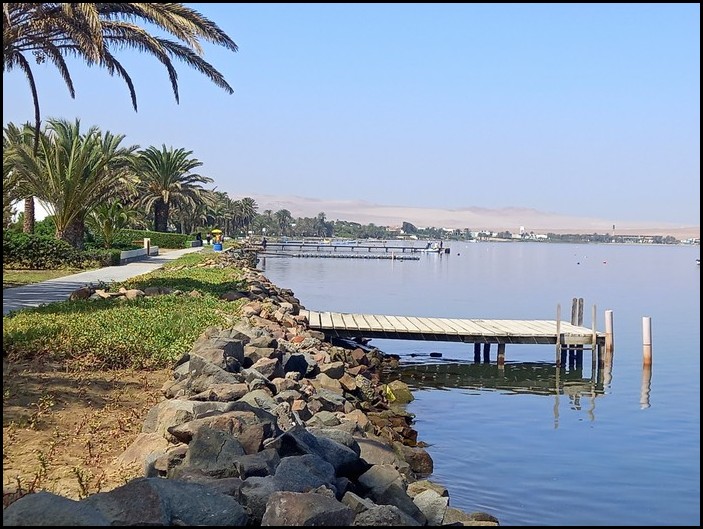
Location
Paracas is located about 3.5-4 hours south of Lima and just south of the small city of Pisco. Paracas National Reserve occupies a large tract of land that stretches between Pisco and the inland city of Ica.
Introduction to Paracas National Reserve
The National Reserve includes Paracas Peninsula, a huge coastal region and several offshore islands. The total area is 3350 square km, with 65% marine area and 35% land area.
The park was established in 1975 as Peru’s very first national park. It’s also the country’s only national park that includes both marine and land protection.
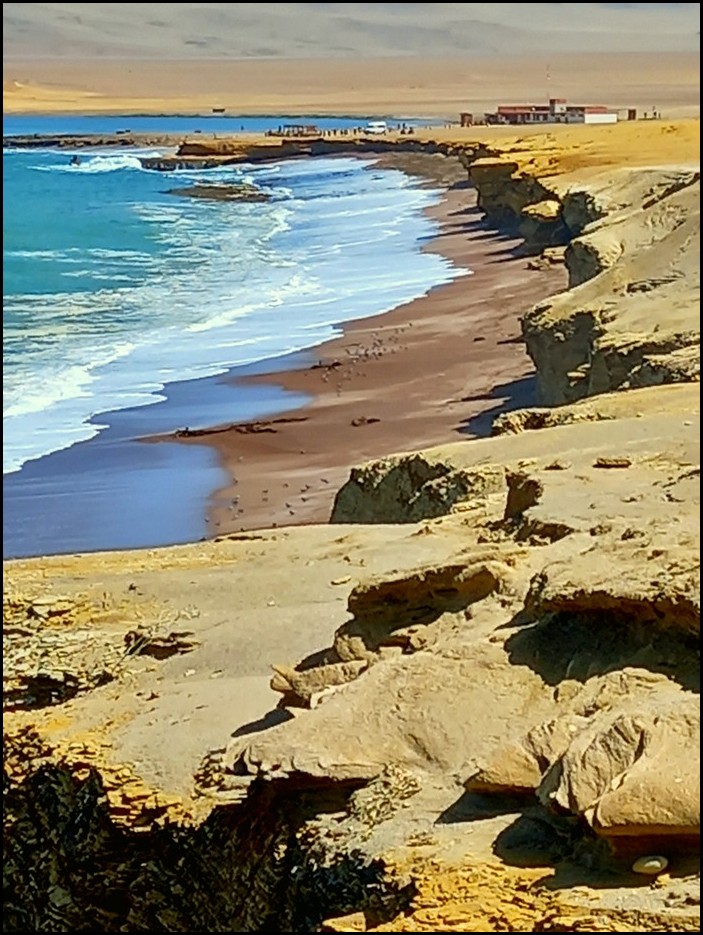
Geography of Paracas
Paracas’ stunning geography is one of the park’s biggest draws.
As noted above, the Paracas region is a desert. It never rains there. But the Pacific Ocean adds high humidity to the air during most of the year.
Considering the area is just sand and rock, it’s amazing how many different colors are present. Varying shades of reds, oranges, yellows, beiges, grays and some stark white.
Even more amazing are the varied colored cliffs, long beaches, offshore rocks and islands, and bays with turquoise water. These stunning features look even more impressive in person than they do in photos.

Paracas Climate
As noted above, Paracas is a desert. It never rains in Paracas.
Yet, because of the Pacific Ocean, the climate is quite humid for much of the year. This also brings in dense flog most of the year, particularly in early mornings.
Sometime in the morning, anytime between 7 am and 11 am, the fog begins dispersing. Blue skies and sunny afternoons emerge. There are also completely cloudy days and clear mornings, Math bright skies from dawn.
In winter months, the general daytime temperature is 18-23 C / mid 60s-70s F, while at nights, it’s about 10-15 C / 50-40 F. Summers in Paracas get very hot and sunny, with daytime temps at 32-35 C / 90-98 F. Since Paracas is just 12 south of the equator, however, the strong. sun always makes the temperatures feel warmer.
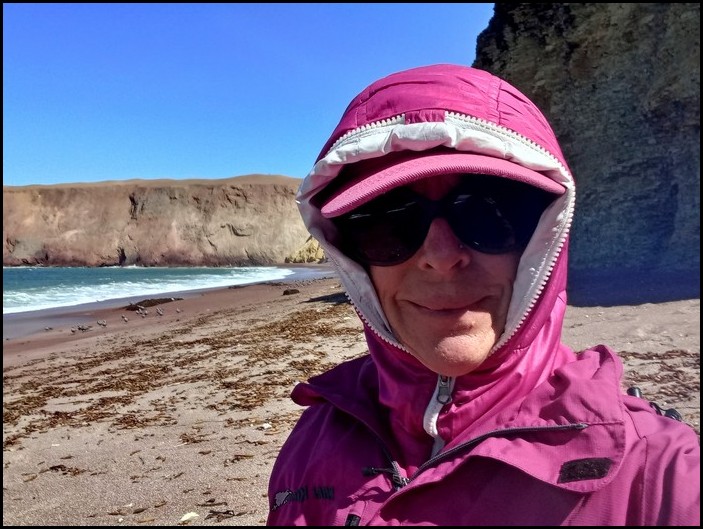
Paracas Winds
The region’s most dominant climatic feature is its unique Paracas Wind. The indigenous name for these winds translates as ‘Sand Rain’. These unique winds are caused by differences in pressure between the ocean and desert. Although there is no rain at Paracas, salty moisture from the Pacific Ocean gets into the strong winds, along with fine sand.
Mornings at Paracas are generally completely calm, to the point that the waters of Paracas Bay are smooth like a plate of glass and the shallow water so clear that you can see to the bottom, along with each rock, fish, seaweed and marine creature present.
Then late morning to midday the wind starts picking up, blowing in S-SSW from the Pacific Ocean. The wind grows stronger and stronger through the afternoon. By 2 pm or 3 pm it’s usually blasting away.
Mild Paracas winds blow at about 15-20 km per hour / 9-12.5 mph while strong winds blast at 40-45 km per hour / 25-28 mph.

Brief ancient history of Paracas
In the 1920s the now-famous Peruvian archaeologist, Julio C. Tello, discovered some amazing relics from the ancient Paracas culture, who lived in the area about 600 BC – 200 AD.
During Tello’s decades of archaeological research, and those of his followers, they uncovered the Paracas’ villages, their unique burial chambers, hundreds of mummies, intentionally-distorted skulls, skull surgical practices, beautiful ceramics, expertly woven textiles and various tools.
Detailed information about the intriguing Paracas culture, archaeological sites and the archeaological history of Paracas are all on display in the excellent Paracas Site Museum Julio C. Tello. It’s located about 2 km from the national reserve’s northern entrance, just outside El Chaco village. There are also more than 100 archaeological sites in the area, mostly from the Paracas people.
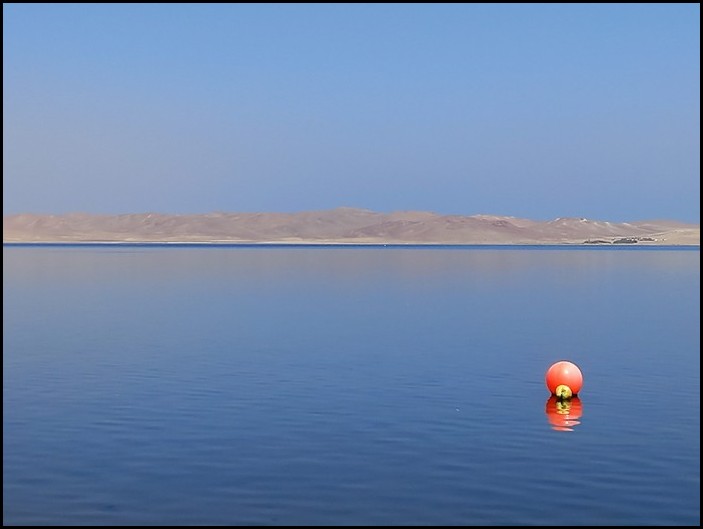
Main areas & attractions at Paracas
Paracas Bay
Running south from little El Chaco fishing village, this large bay runs for X km / miles between the mainland and the northern shores of Paracas Peninsula. The peninsula side is lined by tall sand dunes and low, bare hillls in tones of reds, yellows and beige. The colors contrast beautifully against the deep blue bay water and bright blue sky.
On the mainland side of the bay, just outside El Chaco is the beautifully-landscaped, beach-side Paracas Resort. Beyond that, dozens of gorgeous private homes line the bay for X km /miles. A handful of small boutique hotels are mixed in.
Eventually the homes give way to a couple large hotels and then a small lighthouse and center for wind surfing and paragliding. Just beyond the lighthouse is the Wetland Reserve for birds, an internationally-recognized protected breeding and feeding for birds.
A large flock of Pink Flamingoes lives there as well as large seagulls, herons, egrets and several other seabird species. At times it’s possible to watch massive swarms of birds flying over the bay.
Visitors can walk or cylce along the beaches and shoreline from El Chaco all the way out to the bird reserve, a 45-60 minute walk. Walking through Paracas Resort then past all the gorgeous, well-groomed homes and little-developed beaches while viewing the stark desert hills and dunes is a real treat.
In off-season, there’s hardly anyone else there. It’s quiet, empty, tranquil.
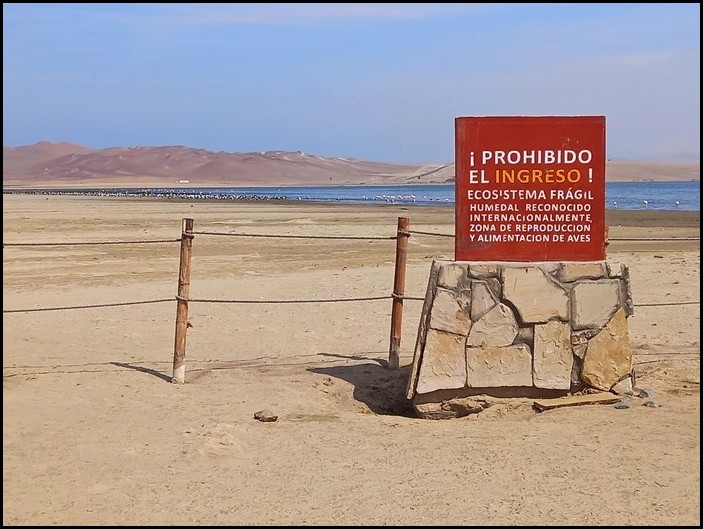
Internationally-recognized Bird Nesting and Feeding Reserve
Located at the curve of Paracas Bay, about 4 km south of El Chaco village, this important bird sanctuary is considered one of the most important in Peru and even in South America.
Nobody is permitted to enter the protected area and a barrier and signs are put in place on the beach so visitors cannot enter. But you can gaze at the distant huge flocks of birds feeding in the shallow water. Visitors with binoculars can get the best views.
The reserve has a large flock of Chilean Flamingoes plus large gulls, heron, egrets and many other sea birds. Sometimes you can watch massive flocks of hundreds of bird flying above the bay.
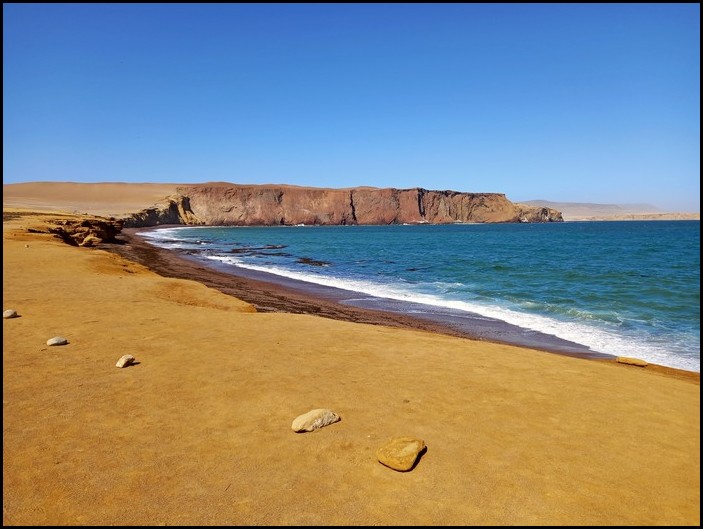
Paracas Peninsula
Paracas Peninsula is located in the northern part of the reserve, just south of El Chaco. It’s just a small part of the national reserve, but has many of the park’s most beautiful scenery.
Here you’ll find golden cliffs, red cliffs, the unique red-sand beach, white-sand Yamuque Beach, turquoise-colored bays and dry, barren hills in varying hues of reds, oranges, yellows, beiges and whites.
Visitors can reach these relatively close natural sites from El Chaco by bicycle, ATV, scooter, motorbike, organized tour or your own private vehicle.
From El Chaco, the nearest attractions are about 20 km / 12 miles. Most of them are near each other, making it easy to visit many or all of them in a day or half-day (depending on your transporatation).
Ballestas Islands
Nicknamed “Poor man’s Galapagos”, Ballestas Islands are a group of small, unihabited rocky islands located out beyond the tip of Paracas Peninsula. The completely undeveloped islands are inhabited by many of the same marine birds and animals found at Galapagos Islands. The only thing missing are the giant tortoises.
There’s a large colony of sea lions, tiny Humbolt Penquins, Paracas Boobies (though not Blue-footed or Red-Footed Boobies), dolphins, passing whales and thousands of various sea bird species.
Not surprsingly, Ballestas Islands are one of Paracas’ main attractions. Boat trips to the islands depart daily from El Chaco and are relatievely cheap at about 55 soles / $15 US. The trip takes about 3-4 hours.
During the trip, visitors also get to see an ancient figure etched into the side of the peninsula’s hillside.
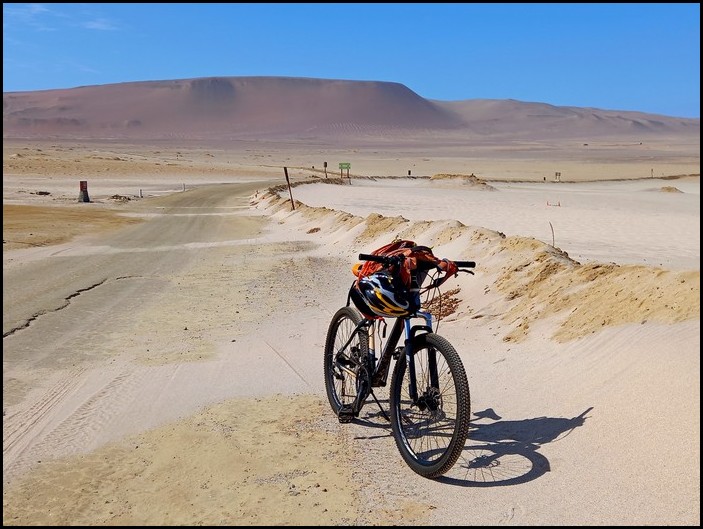
Visiting Paracas National Reserve
The large reserve has two entrances with rough, partly-paved and sandy dirt roads that connect the two entrances and lead to most of the natural attractions within the reserve.
The northern entrance is located a few km south of El Chaco and close to Paracas Peninsula. This is the most-used entrance since it’s so close to El Chaco, where visitors can find hotels, restaurants, tours and various rental vehicles to access the park.
The second entrance is located much further south and inland, just west of Ica city. Travelers with their own vehicle can drive through the entire reserve in either direction, taking in all of the sites along the way.
However, travelers without a vehicle should base themselves in/near El Chaco and then access the park by some sort of rental vehicle or tour.
Visiting Ballestas Islands requires a boat tour from El Chaco. The edge of the bird sanctuary can be reached by walking, cycling or driving the 5 km / 3 miles from El Chaco.
The entrance fee for the land features of Paracas Reserve, as of 2022, is 11 soles / less than $3 US. A real bargain!
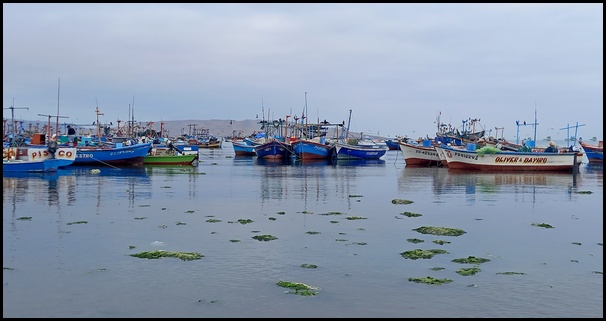
El Chaco town
This former fishing village turned tourist hub is the main jumping off point for all Paracas destinations. The tiny town is attractively set on a long golden beach at the mouth of Paracas Bay.
Hundreds of brightly-colored wooden fishing boats are anchored at the harbor. Several boat piers lead to boats for tours of Ballestas Islands. The beach is backed by a long line of small restaurants, cafes, tour agents and shops.
Otherwise, the town is a rather ugly, over-commercialized tourist trap. It’s filled with tons of small hotels and hostels, more tour agents, stores and rental shops for bicycles, ATVs, scooters and motorbikes.

Summary
I enjoyed exploring Paracas Bay and the National Reserve for one full week. It was amazing to stroll along the beautiful bay, backed by desert dunes; to watch hundreds of birds in flight; to cycle out through the desert and view scenery I’d never seen before; to learn about the intriguing Paracas culture at the small museum; and to walk on a red-sand beach.
If you’re planning a trip through Peru, I hope this article will inspire you to visit Paracas. It’s certainly one of my favorite places in the country.
======================
You might also enjoy:
11 Interesting Facts about Lima – Peru
6 Amazing Things to do in Lima
===========================







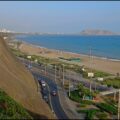
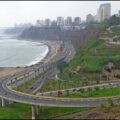

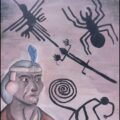

 Hi! I'm Lash, an American nomadic world traveler who's been traveling solo since 1998. I’m passionate about traveling the world nomadically and then sharing it all with you. I hope to inspire you to travel the world, to entertain you with tales from the road, and to help you reach your travel dreams. Welcome!
Hi! I'm Lash, an American nomadic world traveler who's been traveling solo since 1998. I’m passionate about traveling the world nomadically and then sharing it all with you. I hope to inspire you to travel the world, to entertain you with tales from the road, and to help you reach your travel dreams. Welcome! 




4 pings
All about Huacachina Oasis – Peru - LashWorldTour
2022/07/27 at 1:09 am (UTC 8) Link to this comment
[…] « All about Paracas National Reserve – Peru […]
12 Interesting Facts about Peru - LashWorldTour
2022/08/04 at 8:19 am (UTC 8) Link to this comment
[…] are many spectacular areas along Peru’s coast, with Paracas National Reserve considered one of the most beautiful. It features sheer cliffs, sandy beaches and dry desert […]
All about Nazca – Peru - LashWorldTour
2022/08/16 at 8:50 am (UTC 8) Link to this comment
[…] All about Paracas National Reserve […]
6 Delicious Fruits of South America - LashWorldTour
2022/08/29 at 6:25 am (UTC 8) Link to this comment
[…] All about Paracas National Reserve – Peru […]